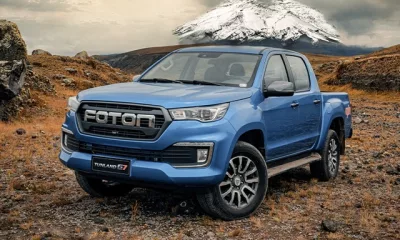
The latest TransUnion SA Vehicle Pricing Index (VPI) shows South African buyers continued their shift towards used vehicles in the first quarter of 2019. The VPI fell for the seventh consecutive quarter thanks to the effects of fuel hikes, challenging economic conditions and electricity outages caused by load-shedding.
Indeed, new vehicle sales fell nearly 10 percent compared with the same period in 2018, with the total number of vehicles financed – including used vehicles – down 8 percent in the first three months of the year, according to the TransUnion VPI report.
Interestingly, the report also shows the used-to-new vehicle ratio moved to 2,13 from 2,09 in the previous quarter (this effectively means 2,13 used vehicles were financed for every new vehicle financed). According to TransUnion’s data, some 83 694 used vehicles were financed in the first quarter compared with some 39 231 new vehicles.
According to TransUnion, buyers are also spending less on cars, with the percentage of cars (both new and used) being financed below R200 000 staying steady at 37 percent (consistent across the past three quarters). In all, 35 percent of used vehicles sold were under two years old, with 10 percent being demo models.
The reduction in industry sales came in spite of the VPI for new and used vehicle pricing falling to 2,3 percent and 1,8 percent in Q1 2019 respectively. The index measures the relationship between the increase in pricing for new and used vehicles from a basket of passenger cars, with the lower score effectively showing car prices were increasing slower than inflation.
Still, while domestic sales are progressively dropping, exports are on the rise, showing strong growth of 29,5 percent year-on-year in January, 22,5 percent in February and 23,7 percent in March. Still, this might not be enough for the industry to reverse its decline by the end of the year, said Kriben Reddy, head of TransUnion Auto.
“The car industry in general is still in decline, and is taking strain from several quarters right now: an on-going subdued macro-economic environment, the lag effect of the 2018 interest hike, weaker exchange rates, lower business confidence in the run-up to the elections and constrained household disposable income have all had an effect on vehicle sales,” said Reddy.
“Load-shedding has also played a role, with the number of valuations being done and the volume of footfall through dealerships being clearly affected by power outages. There’s broad consensus that we’ll see a minor recovery in the auto market second half of the year, but the fear is that it won’t be enough to compensate for the first half decline.
“We anticipate domestic car sales will probably end the year between 3 percent down on 2018. The indicators suggest a better 2020, with the latest GDP figures showing early signs of a turnaround, which should translate into improved consumer confidence and trading conditions,” Reddy explained.




